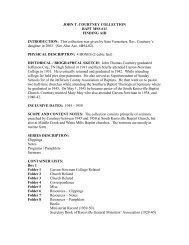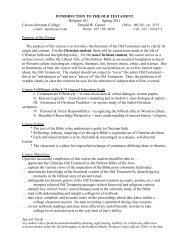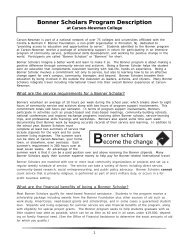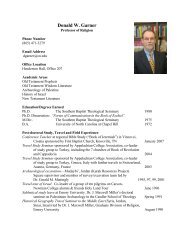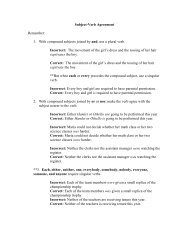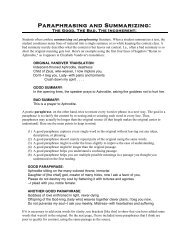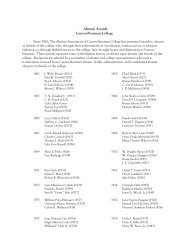a comparative analysis of louis durey and francis poulenc's settings ...
a comparative analysis of louis durey and francis poulenc's settings ...
a comparative analysis of louis durey and francis poulenc's settings ...
Create successful ePaper yourself
Turn your PDF publications into a flip-book with our unique Google optimized e-Paper software.
49<br />
L’Écrevisse—Poulenc<br />
Much like Durey, Poulenc emphasizes the elements <strong>of</strong> backwardness in his setting<br />
<strong>of</strong> “L’Écrevisse.” The approach <strong>and</strong> overall sound, however, is quite different. Durey’s<br />
“L’Écrevisse” does not crescendo at all—it only gets quieter as the piece continues—<br />
Poulenc’s setting provides more dynamic contrast. Also, unlike Durey’s timide tempo<br />
marking setting, Poulenc’s setting trots along at an assez vif (rather fast) tempo. This is<br />
interesting, since crabs are not generally considered fast moving creatures.<br />
As the motive is introduced immediately in the accompaniment, one pictures a<br />
crab scurrying “to <strong>and</strong> fro.” The crab rushes forward <strong>and</strong> retreats backwards, rather<br />
quickly, along with the tide. The piece slows slightly <strong>and</strong> settles into a tempo at the vocal<br />
entrance at measure 3. The accompaniment in measures 3-8 mimics the vocal line, <strong>and</strong><br />
the motive is reintroduced, an octave lower <strong>and</strong> backwards in measure nine, when the<br />
vocal line begins its slide backwards. The repetition, especially in measures 9-12,<br />
emphasizes the poet’s hesitant tendency. As the piece continues, the range <strong>of</strong> the<br />
accompaniment descends <strong>and</strong> both h<strong>and</strong>s move into the bass clef at measure nine.<br />
Fig. 11 “L’Écrevisse,” mm. 1-2<br />
The tessitura <strong>of</strong> the vocal line lies around A-flat, as the piece is in A-flat minor.<br />
The vocal line moves in seconds <strong>and</strong> thirds until à reculons in bar nine, when the voice<br />
slides down a fifth, emphasizing backwardness. At measure six, Poulenc alters the time



